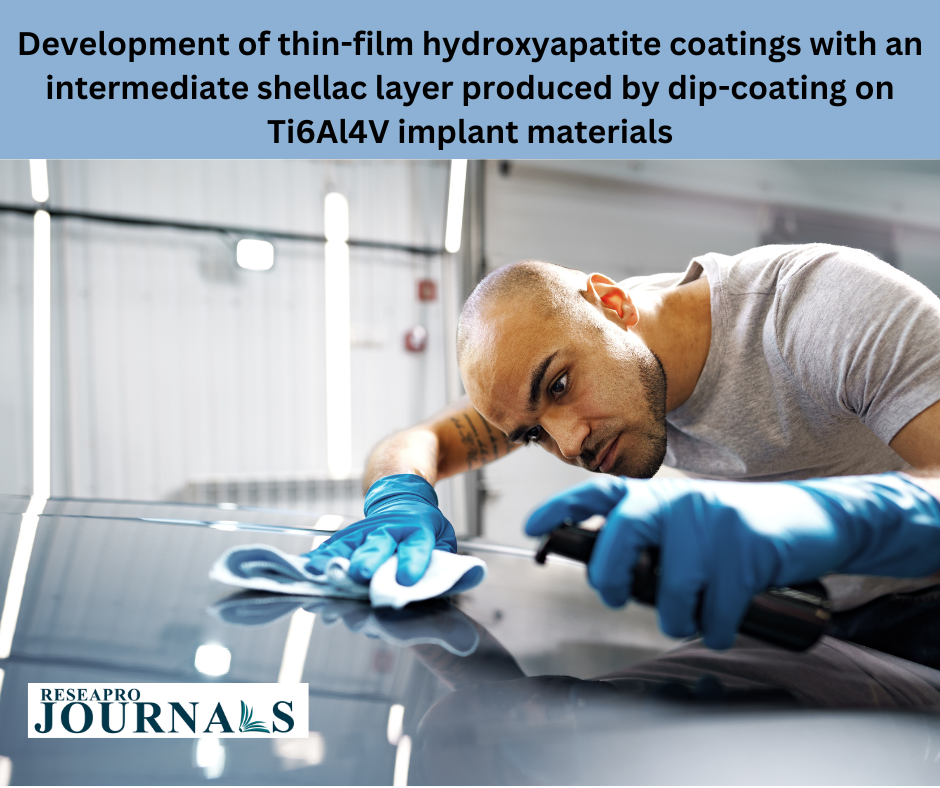This research focuses on developing a novel method for coating Ti6Al4V implant materials with thin-film hydroxyapatite (HAp) using a dip-coating process and an intermediate shellac layer. Here’s a breakdown of the key points:

Motivation:
- Ti6Al4V is widely used in implants due to its strength and biocompatibility. However, its long-term success can be hampered by poor bone integration.
- HAp, a calcium phosphate mineral similar to bone tissue, can promote bone growth and improve implant integration.
- Traditional coating methods for HAp often involve high temperatures or complex processes, limiting their application and increasing costs.
Proposed Method:
- This study introduces an intermediate shellac layer between the Ti6Al4V substrate and the HAp coating. Shellac, a natural resin, acts as an adhesive promoter, enhancing the bond between the two materials.
- The HAp coating is applied using a simple dip-coating process, eliminating the need for high-temperature treatments or other complex techniques.
Key benefits:
- Improved adhesion strength of the HAp coating without the need for additional thermal treatment.
- Potential for thinner and smoother HAp coatings.
- Lower cost and simpler fabrication process compared to traditional techniques.
- Potential for enhanced biocompatibility and bone integration of implants.
